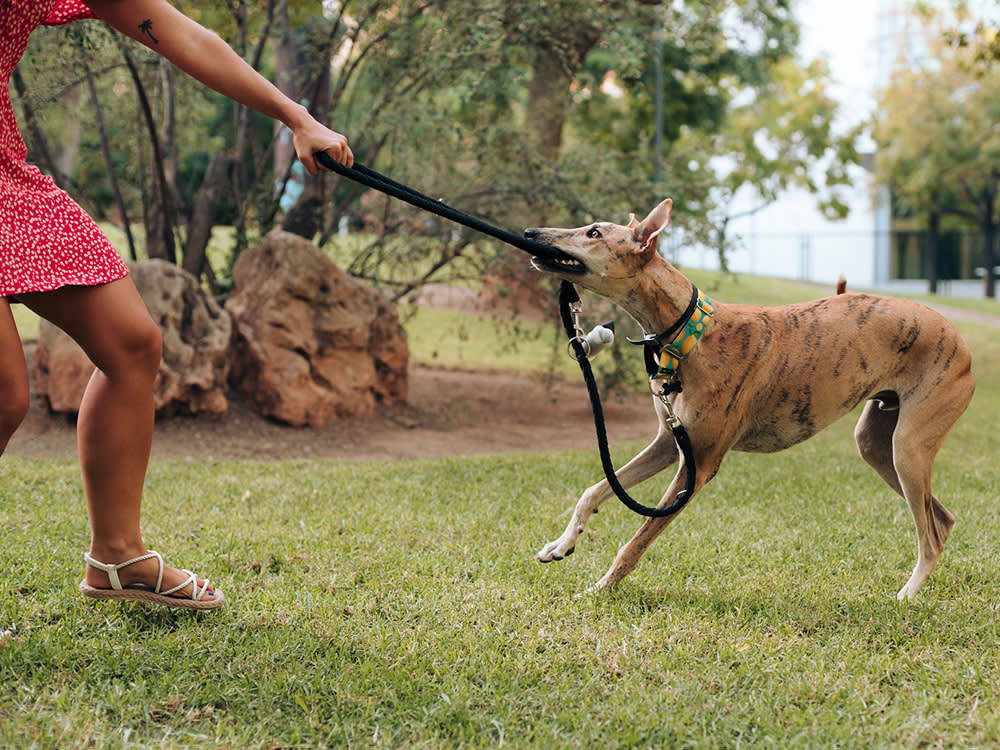Introduction: Understanding Leash Pulling
Leash pulling is a common behavior problem among dogs that can make walks stressful and challenging for both the dog and the owner. It often stems from a combination of factors, including excitement, lack of training, and the dog’s natural inclination to explore its surroundings. However, with patience, consistency, and the right training techniques, leash pulling can be effectively addressed. In this article, we’ll explore a variety of strategies to help dog owners curb leash pulling behavior and enjoy more enjoyable walks with their canine companions.
Understanding the Root Causes of Leash Pulling
Before implementing strategies to address leash pulling, it’s important to understand the underlying reasons behind this behavior.
1. Excitement and Energy
Many dogs pull on the leash out of excitement or excess energy. They may be eager to explore their surroundings, greet other dogs or people, or simply enjoy the experience of being outdoors.
2. Lack of Training
Some dogs have never been properly trained to walk on a leash without pulling. Without consistent guidance and reinforcement, they may develop the habit of pulling as a means of moving forward.
3. Behavioral Issues
In some cases, leash pulling may be a symptom of underlying behavioral issues such as fear, anxiety, or aggression. Addressing these issues may require professional intervention from a qualified dog trainer or behaviorist.
Effective Strategies for Curbing Leash Pulling
Fortunately, there are several effective strategies that dog owners can employ to address leash pulling behavior and promote more relaxed and controlled walks.
1. Positive Reinforcement Training
Positive reinforcement training involves rewarding desired behaviors with treats, praise, or other rewards. When your dog walks calmly on the leash without pulling, immediately reward them with a treat and verbal praise. Consistently reinforcing this behavior will encourage your dog to walk politely on the leash.
2. Use of No-Pull Harnesses or Head Collars
No-pull harnesses and head collars are designed to discourage leash pulling by redirecting the dog’s attention and providing gentle feedback when they pull. These devices can be effective tools for managing leash pulling while providing a more comfortable and humane alternative to traditional collars and choke chains.
3. Practice Loose Leash Walking
Teaching your dog to walk on a loose leash involves training them to maintain a relaxed and comfortable pace without pulling. Start by practicing in a quiet, distraction-free environment, gradually increasing the level of difficulty as your dog becomes more proficient. Use treats and praise to reward your dog for walking calmly by your side.

4. Use of Distraction Techniques
When your dog begins to pull on the leash, use distraction techniques to redirect their attention and regain control. You can try changing direction, stopping abruptly, or using a verbal cue such as “heel” to refocus your dog’s attention on you.
5. Be Consistent and Patient
Consistency is key when it comes to addressing leash pulling behavior. Set clear expectations for your dog and be consistent in enforcing rules and boundaries during walks. Patience is also important, as it may take time for your dog to learn new behaviors and habits.
6. Seek Professional Help if Needed
If leash pulling persists despite your best efforts, consider seeking professional help from a qualified dog trainer or behaviorist. They can assess your dog’s behavior, identify underlying issues, and develop a customized training plan to address leash pulling effectively.
Conclusion: Enjoying Stress-Free Walks with Your Dog
Leash pulling can be a frustrating and challenging behavior for dog owners to deal with, but with patience, consistency, and the right training techniques, it can be effectively addressed. By understanding the root causes of leash pulling and implementing positive reinforcement training, no-pull harnesses, and other effective strategies, dog owners can enjoy more enjoyable and stress-free walks with their canine companions. Remember to be patient, consistent, and compassionate as you work with your dog to curb leash pulling behavior and promote calm and controlled walking habits.










